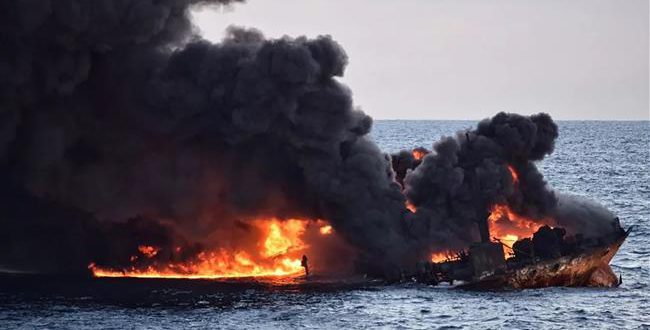An Iran-led panel investigating a tanker tragedy that claimed the lives of 32 people off China’s shores in January has identified “human error“ for causing what is believed to have been the worst oil ship disaster in decades.
The incident involved the collision of Sanchi – which was run by Iran’s top oil shipping operator the National Iranian Tanker Company (NITC) – with a wheat-carrying Chinese vessel named CF Crystal.
It took place at off the coast of China near Shanghai and the mouth of the Yangtze River Delta on January 6. 2018.
The Sanchi – which was carrying condensates for South Korea – eventually sank after burning for eight days. The entire crew of 30 Iranians and two Bangladeshis on board the ship are presumed dead.
Nader Pasandideh. the head of the Iranian delegation in a panel formed to study the incident. told reporters a change in the course of CF Crystal was to blame for the tragedy.
The Chinese ship. Pasandideh said. had failed to change its course even though Sanchi had warned it to do so 15 minutes before the incident.
He added that Sanchi navigating officers were also to blame given that they had failed to take a timely move to change the direction of the ship after realizing that CF Crystal was moving ahead in the collision course.
Pasandideh further emphasized that the account of the Iran-led panel was different from that of a separate panel which was led by China.
He said the China-led panel believed that Sanchi had failed to respect the priority to cross rule of maritime navigation.
Other members of the Iran-led panel were Bangladesh – that had two of its nationals on board the tanker and Panama – where Sanchi had been registered.
The China-led panel also comprised of Hong Kong where CF Crystal had been registered.
Sanchi was carrying 36.000 tonnes (almost one million barrels) of condensate. Accordingly. it left two huge oil slicks in East China Sea over a combined 109 square kilometers.
 Iran Energy News Oil, Gas, Petrochemical and Energy Field Specialized Channel
Iran Energy News Oil, Gas, Petrochemical and Energy Field Specialized Channel




